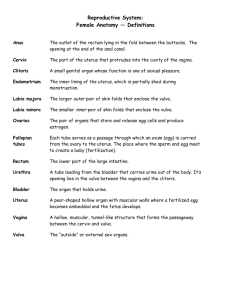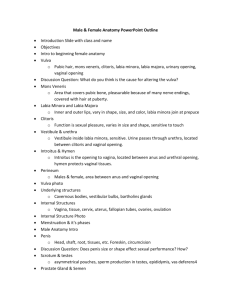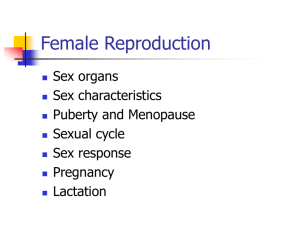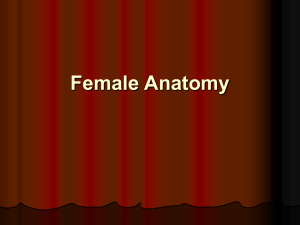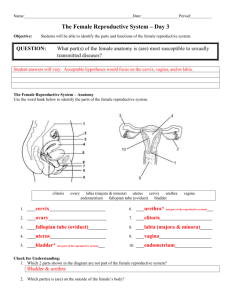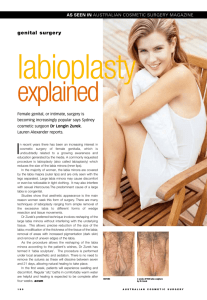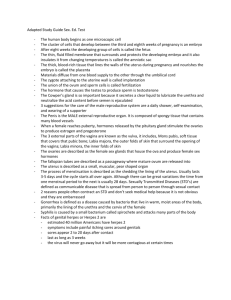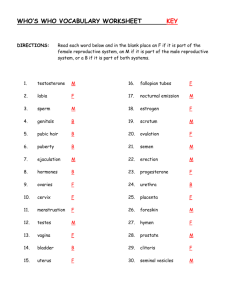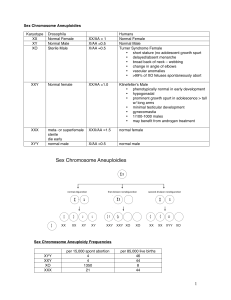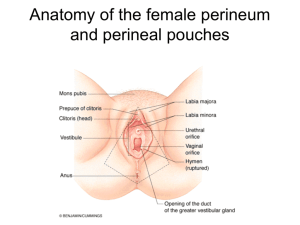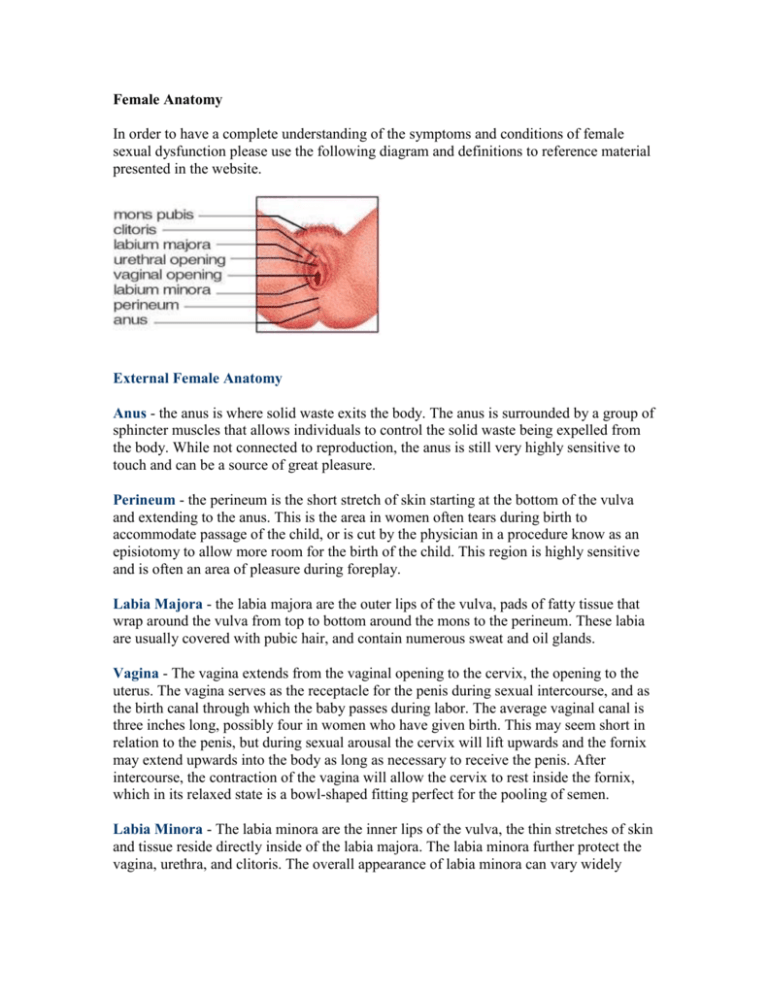
Female Anatomy
In order to have a complete understanding of the symptoms and conditions of female
sexual dysfunction please use the following diagram and definitions to reference material
presented in the website.
External Female Anatomy
Anus - the anus is where solid waste exits the body. The anus is surrounded by a group of
sphincter muscles that allows individuals to control the solid waste being expelled from
the body. While not connected to reproduction, the anus is still very highly sensitive to
touch and can be a source of great pleasure.
Perineum - the perineum is the short stretch of skin starting at the bottom of the vulva
and extending to the anus. This is the area in women often tears during birth to
accommodate passage of the child, or is cut by the physician in a procedure know as an
episiotomy to allow more room for the birth of the child. This region is highly sensitive
and is often an area of pleasure during foreplay.
Labia Majora - the labia majora are the outer lips of the vulva, pads of fatty tissue that
wrap around the vulva from top to bottom around the mons to the perineum. These labia
are usually covered with pubic hair, and contain numerous sweat and oil glands.
Vagina - The vagina extends from the vaginal opening to the cervix, the opening to the
uterus. The vagina serves as the receptacle for the penis during sexual intercourse, and as
the birth canal through which the baby passes during labor. The average vaginal canal is
three inches long, possibly four in women who have given birth. This may seem short in
relation to the penis, but during sexual arousal the cervix will lift upwards and the fornix
may extend upwards into the body as long as necessary to receive the penis. After
intercourse, the contraction of the vagina will allow the cervix to rest inside the fornix,
which in its relaxed state is a bowl-shaped fitting perfect for the pooling of semen.
Labia Minora - The labia minora are the inner lips of the vulva, the thin stretches of skin
and tissue reside directly inside of the labia majora. The labia minora further protect the
vagina, urethra, and clitoris. The overall appearance of labia minora can vary widely
amongst women. Some women have small labia minora while others have larger lips that
protrude from the labia majora. The labia minora is analogous to the male strotum.
Clitoral hood - this is the "hood" of flesh that partially or fully covers the un-stimulated
clitoris. The hood serves to protect the sensitive clitoris below from unwanted stimuli.
Clitoris - this is the small light pink oval between the top of the labia minora and the
clitoral hood. The clitorus is a small body of smooth spongy tissue that is highly sensitive
contains some 8,000 nerve endings packed into one small area. Compare this with the
penis, which only has some 4,000 nerve endings in a much larger area and you will have
an understanding sensitive nature of the clitoral area.. The clitoris is protected by the
prepuce, or clitoral hood, a covering of tissue similar to the labia minora. During sexual
excitement the clitoris becomes erect and the hood retracts making the clitoris more
accessible. The size of the clitoris various amongst women, they usually very from the
size of a small green pea to the size of a peanut.
Mons veneris - is the area of fatty tissue that covers the pubic bone below the abdomen
but above the labia. The mons is sexually sensitive in some women and protects the pubic
bone from the impact of sexual intercourse. This is the region that contains the the
familiar "triangle" of pubic hair just above the vulva.
Internal Female Anatomy
Cervix - the cervix is the opening to the uterus. It varies in diameter from 1 to 3
millimeters, depending upon the time in the menstrual cycle the measurement is taken.
The cervix is sometimes plugged with cervical mucous to protect the cervix from
infection; during ovulation, this mucous becomes a thin fluid to permit the passage of
sperm.
Uterus - the uterus, or womb, is the main female internal reproductive organ. The inner
lining of the uterus is called the endometrium, which grows and changes during the
menstrual cycle to prepare to receive a fertilized egg, and sheds a layer at the end of
every menstrual cycle if fertilization does not happen. The uterus is lined with powerful
muscles to push the child out during labor.
Fallopian tube - this is either of a pair of slender ducts through which ova pass from the
ovaries to the uterus during the menstrual cycle.
G-spot - in the illustration above the g-spot points to a region just in the vagina adjacent
to the bladder. The G-spot is a controversial area that many women claim is very
sensitive and can lead to a heightened orgasm when stimulated during intercourse.
Generally two fingers are used to stimulate this region during intercourse, however, the
certain sexual positions have also been known to stimulate this spot.
Ovaries - the ovaries are 2 small glands located on either side of a woman's uterus. They
are part of the female reproductive system that are responsible for storing and releasing of
the eggs (ova), which can develop into fetuses if fertilized by a male's sperm.
Approximately once a month, about 2 weeks before a woman's next period ovulation
occurs were an egg is released from one of her ovaries The ovaries also produce female
sex hormones (estrogen and progesterone), which help control the menstrual cycle, breast
development, and other functions.
Fornix - this is the top inside of the vagina that extends slightly above and around the top
and bottom of the cervix. During intercourse, the fornix balloons upwards in order to
receive the penis

